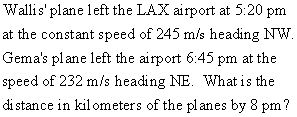Chapter 3 - Literal Text
Rule 3.1 - ID: literal_SPEL1
Description
Most text-to-speech (TTS) engines have an algorithm to determine when to spell out a word. The MathSpeak translator should rely on the TTS engine to determine when words should be spell out for narrative (non-mathematical) text.
Example 1 literal_SPEL1-10
Example Image:

Rule 3.2 - ID: literal_SYM1
Description
Symbols used in narrative text should be interpreted by the MathSpeak symbol lexicon. Some symbols will be interpreted differently because of being in the narrative context.
Rule 3.3 - ID: literal_SPC1
Description
Spaces in narrative are not stated.
